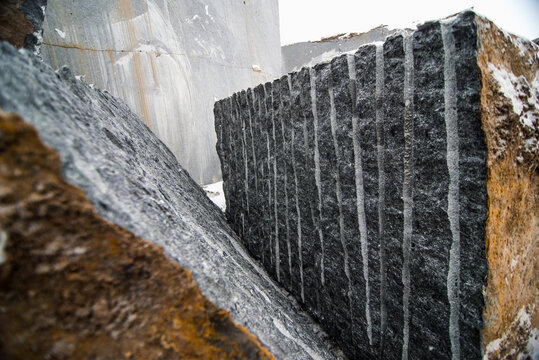The Covert Gems: Exploring Granite Quarries in South Africa
The Covert Gems: Exploring Granite Quarries in South Africa
Blog Article
Unearthing the Rich History and Lasting Practices of Granite Quarrying
As we stand on the precipice of revealing the complex tapestry of granite quarrying, a trip with time discloses not just the physical act of drawing out stone yet likewise the social and historical relevance woven right into the extremely fabric of this method. From the old origins that laid the foundation for modern-day quarrying techniques to the sustainable methods that are shaping the future of this sector, each carve mark on granite surface areas narrates waiting to be unearthed (granite quarries in south africa). The tradition of granite quarrying extends far beyond simple removal; it is a testimony to human ingenuity, durability, and the enduring allure of this impressive stone
Ancient Origins of Granite Quarrying
Going back to ancient worlds, the method of quarrying granite has actually been an integral part of human history and architectural innovation. The earliest proof of granite quarrying dates back to ancient Egypt, where huge pyramids and elaborate sculptures were crafted from this sturdy rock. The Egyptians made use of primitive tools to extract granite blocks from quarries, showcasing the significance of this material in their monumental constructions.
Moving forward in history, the Greeks also made considerable payments to the quarrying of granite. The Greeks utilized granite in different architectural marvels, such as temples and sculptures, showing their skill in shaping and carving this hardy stone. The Romans better refined the techniques of quarrying granite, employing advanced devices like knives and hammers to remove and form granite for their famous frameworks.
With the centuries, the practice of quarrying granite has evolved, with modern-day innovations improving effectiveness while maintaining the timeless allure of this natural stone - granite quarries in south africa. From old human beings to modern home builders, the tradition of granite quarrying proceeds to form our world
Evolution of Quarrying Techniques
The advancement of quarrying methods has actually been marked by a continuous progression in the direction of higher efficiency and precision in drawing out granite. From the basic techniques employed by our ancestors to the innovative modern technologies used in contemporary quarrying procedures, the sector has actually gone through significant innovations. Early quarrying strategies entailed manual work with standard devices such as knives, hammers, and wedges to remove granite blocks from the planet. As human beings progressed, strategies like fire-setting and primitive nitroglycerins were introduced to facilitate the extraction procedure.
In more current times, the advent of equipment revolutionized the quarrying market, enabling faster removal rates and increased productivity. Technologies such as diamond cord saws, high-pressure water jets, and pneumatically-driven drills have come to content be standard in modern quarries, permitting specific cutting and decreased waste. Furthermore, innovations in computer-controlled devices and 3D modeling have maximized quarrying operations, bring about minimal environmental effect and boosted sustainability techniques. As the demand for granite remains to increase, the advancement of quarrying methods stays integral to conference market needs effectively and sustainably.
Cultural Value of Granite
Granite holds an extensive social importance across numerous people due to its enduring visibility in architectural masterpieces and respected monuments. The cultural value of granite expands past its physical features; it embodies resilience, security, and timelessness, making it a sign of enduring heritages and customs.

Lasting Practices in Quarrying
Amidst the abundant history of granite quarrying and its cultural significance exists an expanding focus on lasting methods within the market. As environmental understanding and concerns regarding source deficiency have increased worldwide, the quarrying field has increasingly accepted lasting techniques to minimize its effect on the atmosphere and bordering areas.

Moreover, recovery and recovery of quarry sites post-extraction are essential to lasting practices. By recovering quarried locations to a natural or beneficial state, such as producing wild animals environments or leisure rooms, quarriers can balance out the environmental footprint of their operations and add favorably to the regional community.
Heritage of Granite Quarrying
With a historical backdrop soaked in workmanship and commercial development, what withstanding impact has granite quarrying left on the landscape of contemporary society? The legacy of granite quarrying goes beyond simple removal techniques; it has actually shaped building wonders, metropolitan landscapes, and social heritage worldwide. The More Bonuses resilient nature of granite has actually made it a recommended selection for monuments, structures, and infrastructure, standing as a testimony to the skill and creativity of quarry workers throughout generations.
Moreover, the economic impact of granite quarrying can not be forgotten. The market continues to provide job opportunity and drive local economic climates in areas where granite extraction prevails. It has actually also spurred technical innovations in quarrying methods and tools, bring about a lot more effective and lasting practices.
In regards to sustainability, the tradition of granite quarrying consists of efforts to reduce environmental effects via recovery tasks and responsible resource administration. By balancing financial interests with ecological stewardship, the industry makes every effort to ensure that future generations can remain to profit from this long-lasting natural source.
Conclusion

Report this page